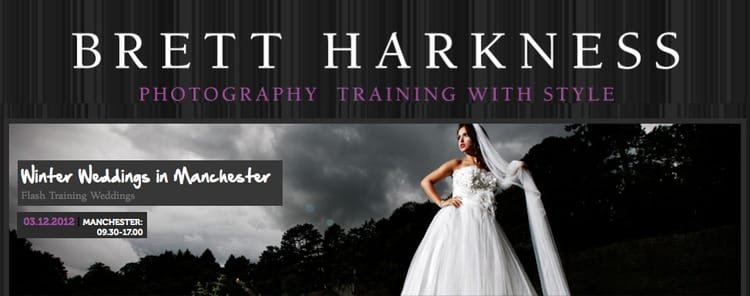How can I feel more confident using flash?
Q. How can I feel more confident using flash? I avoid it as much as I can! – KM, UK (and many other people via Facebook)
A. The overwhelming response to “What do you find most difficult about photography?” which I asked you on Facebook recently was FLASH! So let’s address this now!
Virtually everyone that commented said they struggle with flash, and many admitted to just avoiding it as much as they could. Well so do I. But the reason I avoid it is because I much prefer shooting in natural light. Flash involves setting up equipment which changes the dynamics of the shoot for me. If the flash is mounted on camera I find the effect unflattering, and it is often distracting for young children.
If I use lights which give a more flattering effect, then it’s a case of setting them up and creating a mini studio set outside, which is not only time consuming and technical, but it stops the flow of the shoot for me, due to the way I work. So I’ve worked out ways of shooting in difficult situations, so I don’t have to use flash, and when it’s essential (on some areas of a wedding), then I use some very simple techniques, which I’ll get onto in a few minutes.
If this question was asked on another photography website, you may have found the answer to be quite different. Many people love flash and can’t get enough of it. However, my site attracts non-techy people, and quite simply flash is technical. Using flash properly means thinking about equipment during the shoot (which I hate), and having the technical know-how to be totally confident using it in all situations.
I find it difficult to get the best out of people when I have to think technically – I like my equipment set up so I don’t have to move anything, and I can totally focus on the client. Having your flash set on automatic and using it the same way for everything just doesn’t work – you have to be able to change the settings for different effects, and in different situations. I find that by the time I’ve faffed around working out all the flash settings I need (and remembering them in the first place) I have totally lost the rapport with the client, because I’m concentrating on equipment and not on them.
Having discovered this the hard way years ago (and failed miserably at courses, because I just didn’t understand it!) I made the decision never to shoot with flash unless it was essential, but to find alternative ways of shooting.
This led me to discover that I much preferred shooting in natural light anyway, and that if you plan ahead and decide you are going to find a way to overcome any problem then you will be able to take pictures of anyone, in any weather and any situation. If you feel the same way, then have the confidence to turn down jobs that stress you out – focus on and perfect what you do enjoy doing, it will make you much happier and you will dramatically improve what you are already good at.
The only exception to this is weddings – there are some shots you just have to do with flash – but I still shoot 90% of the pictures in natural light; I only use flash for shots such as coming down the aisle, or dancing shots in the evening, and occasionally candid shots of guests inside on a very wet day. But I use it in a simple way – like a recipe for different things.
These pictures are taken using the simple settings below, to keep the ambient light in the background.
It is a myth to think that in order to be a good portrait and wedding photographer, you have to know everything about flash – you do NOT have to use flash for anything except inside at weddings (and even then many inside shots do not need flash). Everything else you can do with natural light, if you are prepared and think ahead.
So how can you be more confident using flash?
Option 1. If you really want to learn the ins and outs and try new techniques using flash:
Go on a course with a great friend of mine, Brett Harkness. He knows everything there is to know about flash, but be warned, it will be technical – not for the faint hearted! Definitely worth going on the course though, so you can either learn what you need to know, or decide that you will pursue the natural light option, and stick to a few simple settings when you need them – depending on how your brain feels afterwards!
Option 2. If you prefer to shoot most of your work in natural light but need help with the few occasions when flash is essential, check out: HOW TO: Shoot wet weddings with the minimum use of flash, and use these tips below to set up your flash easily:
The flash I use is a Canon Speedlite 580 Ex II – though they bring new versions out all the time – just Google it and see what comes up.
FIRST:
Set the flash to ETTL (not manual)
Set the camera to manual (M)
Set ISO to 400 or 800
THEN:
For corning down the aisle shots: Set your camera on 60th at F5.6 (I often just use AV here as I can’t always remember to put my camera back when I get out of the church!)
For interior documentary shots of guests, etc: Use 30th or 60th sec at F5.6 – depending on ambience you want.
For evening dancing in disco lights, etc: Use 20th -60th sec at Mft – F8 depending on ambience you want and how much background you want in focus.
I have these settings typed up on a sticker, stuck on the head of my flash – so I can remember (but that’s because I very rarely use a flash). If you’re anything like me, you have so much to think about at a wedding, it really helps to just glance down at your flash and know what to set it on immediately in different situations, by reading it rather than remembering it!
Please note that I shoot images of people, and all the information given in this blog is for that kind of photography – I don’t shoot commercial pictures in factories, or events in nightclubs, etc. – if you want to perfect that kind of photography, you need to go on a course and learn the best techniques for using flash in those situations.
For portraits – take your subject to the light, not the light to your subject.
There is no pressure on a portrait shoot, and therefore no need to use flash – you can take your time and do what you like! Just because the child looks cute sitting on the sofa in a dark room doesn’t mean you need to take the picture there. Set up your scene in a doorway, and they will look just as cute there, only better lit! You just need to find soft, natural light – usually in a doorway, under a tree, etc. – or have the sun behind your subject on a bright day. If it’s raining check out: HOW TO: Photograph children in winter.
How do you know when the light is right?
If you are out in the open on an overcast day, tell your subject you want to check the light on their face – ask them to face you, and look at the light on their face. Then move to the opposite side and ask them to turn round to you, check the light on their face this way – one way will look darker than the other – choose the lighter side. Expose off their face and your pictures should look great. Check out the video on Work It Girl! blog which shows you how to do this.
For weddings check out: HOW TO: Shoot wet weddings with the minimum use of flash.
WARNING! Check your shutter speed on darker days! You do not need to shoot indoors, you can always find somewhere outside even if it’s raining. However, on a wet day I will usually start just inside a doorway – either the front door or patio doors, so the subject is facing the light, and I am outside, shooting into the house (and getting wet!).
It is very important however, that you check your shutter speed – on a rainy day it can go very low (below 1/60th sec) and your pictures may blur (which is why people tend to use a flash). Just increase the ISO to 800 and hold your camera very steady. Make sure the subject knows it’s a bit dark, and they need to sit still, and just take extra care not to move your camera when you take the shot. Trust me, you can do it – it just means extra thought with each picture, rather than firing off lots of shots. Think about the time of day you are going to shoot, and start earlier. It’s how I work all the time in the UK.
Use a reflector to bounce extra light in. If you find your pictures look too grainy at 800, then try reducing the “noise” by using the “luminance” slider in Lightroom.
You cannot of course shoot in real darkness (i.e. night time) without a flash! Which I why I always shoot in the light, and turn down portrait shoots in winter evenings – I’ve spent too long in the past getting stressed out by trying to shoot in the dark in winter – I don’t like the experience and I don’t like the results – so I choose to have a happier life and persuade people that their pictures will look a lot more flattering if they do the shoot at a different time of year.
So to recap
If you really like the effect flash gives and want to pursue it – the only way to be totally confident is to learn the technical side and go on a course.
If you wish you could just focus on what you are shooting, and don’t like using flash – try my settings above for the essential times you need it. They’ve worked for me for years! And have the confidence to believe there is another way; plan ahead and work out how you can shoot in natural light wherever you can.
Hope this helps.
Check out: Set up your camera the easy way… and then take a look at the Shoots on this site which show you lots of ways of shooting like this.
Also check out my book: 99 Portrait Photo Ideas which has lots of ideas for natural light portrait photos (and will help you with arranging brides and groups at weddings).




